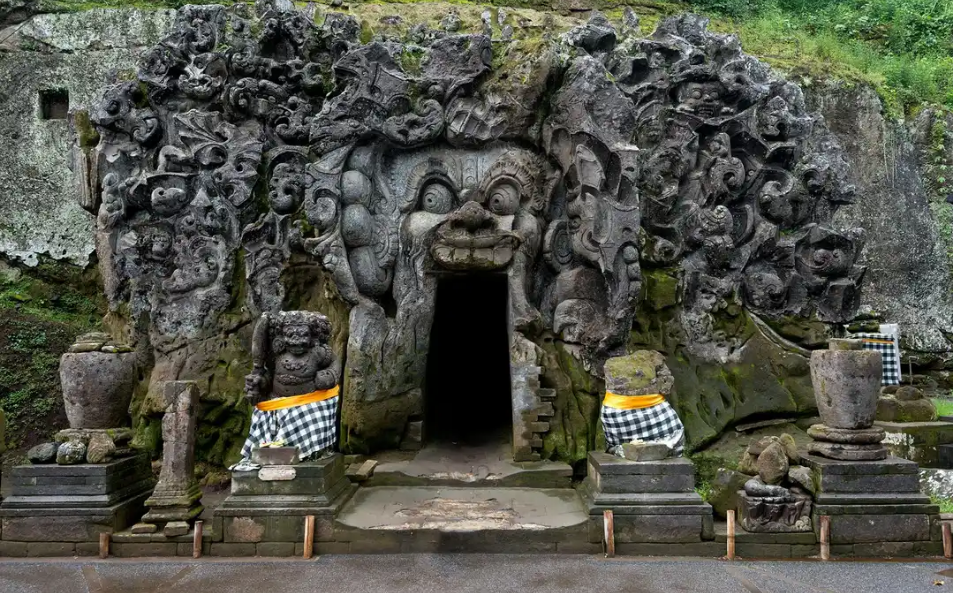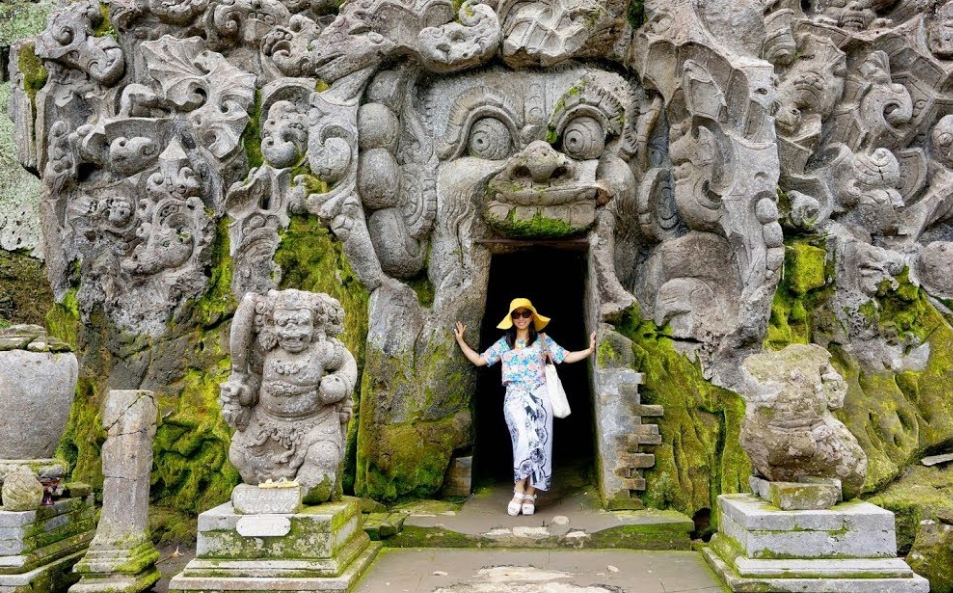Bali is a treasure trove of history, spirituality, and culture, with countless hidden gems for the curious traveler. One such gem is Goa Gajah, or the Elephant Cave. This sacred site is not only a key destination for tourists but also a spiritual refuge for many locals. The journey of exploring Elephant Cave: the spiritual heart of Goa Gajah opens a doorway into Bali’s deep religious heritage, but the real question remains: Is it merely a tourist attraction, or is there something more profound here?
A Brief History of Goa Gajah
Goa Gajah, or Elephant Cave, dates back to the 9th century, during the reign of the Warmadewa Dynasty. This cave was initially created as a sanctuary for meditation. Despite the name, you won’t find any elephants here. The name ‘Elephant Cave’ possibly comes from the nearby Elephant River or perhaps the impressive elephantine carvings at the cave’s entrance. The exact origin is still debated by historians, which adds to the cave’s allure. Understanding its origins is key to exploring Elephant Cave: the spiritual heart of Goa Gajah more deeply.
The Spiritual Significance Exploring Elephant Cave
At first glance, Goa Gajah may look like a typical archeological site. However, it is much more than that. The cave was built as a place for spiritual reflection, and to this day, it serves as an important place of worship for both Hindus and Buddhists in Bali. Inside, visitors can find ancient idols, relics, and carvings that represent deities, each adding to the profound spiritual weight the site carries. It’s impossible to deny that exploring Elephant Cave: the spiritual heart of Goa Gajah offers a much-needed spiritual reprieve from the busy modern world.
Exploring Elephant Cave Iconic Entrance and Its Symbolism
The entrance to the Elephant Cave is perhaps its most striking feature. The mouth of the cave is carved in the shape of a demon’s face, with wide eyes and a menacing expression, almost as if it’s guarding the secrets within. Many scholars interpret the demon’s face as a symbol of protection. It’s meant to ward off evil spirits while guiding those who seek inner peace. From an argumentative perspective, does this entrance invite people to explore their own spirituality, or does it act as a deterrent, making one rethink their journey into the depths of this sacred space?
A Unique Blend of Hinduism and Buddhism
Another fascinating aspect of Goa Gajah is its blend of both Hindu and Buddhist iconography. This cave is a testament to the harmonious relationship between the two religions, something that’s not always found in other parts of the world.The presence of both Ganesh, a Hindu god, and the stupas, which are symbols of Buddhism, represent the dual religious influences in Balinese culture.If you are exploring Elephant Cave: the spiritual heart of Goa Gajah, you cannot ignore the coexistence of these two faiths, which adds an extra layer of significance to this historical site.
Artifacts and Archeological Discoveries
Goa Gajah is not just a place of worship; it’s also a gold mine for archeologists. Over the years, several excavations have revealed ancient relics, including statues, sacred pools, and stone carvings. These artifacts give us insight into the lives of those who once used this space for meditation and spiritual practice. However, while these discoveries are crucial for historians, they also prompt a larger question: Does the growing focus on archeological value diminish the spiritual sanctity of Goa Gajah? When exploring Elephant Cave: the spiritual heart of Goa Gajah, one may wonder whether it is a museum of the past or a living, breathing place of worship.
The Sacred Pools and Their Ritual Importance
As you explore the grounds surrounding the cave, you’ll notice two sacred pools filled with fountains and guarded by stone maidens. These pools are believed to hold holy water used for purification rituals. Visitors can witness locals performing their cleansing rituals here, which provides a rare glimpse into the ongoing spiritual practices that are central to the Balinese way of life. For those exploring Elephant Cave: the spiritual heart of Goa Gajah, these pools serve as a reminder that this place is not just a historical relic but a living spiritual site.
The Role of Pilgrims
While Goa Gajah attracts thousands of tourists every year, it also remains a pilgrimage site for many. Devotees come to meditate and seek spiritual guidance within the sacred cave and its surrounding grounds. For them, exploring Elephant Cave: the spiritual heart of Goa Gajah is not just a journey into history but a deep personal experience of faith and devotion. The cave’s spiritual energy is palpable, making it a destination that goes beyond mere sightseeing.
A Debate: Tourist Attraction or Sacred Space?
Herein lies the debate: Is Goa Gajah becoming too commercialized, losing its spiritual essence to mass tourism? The growing popularity of Bali as a global travel destination means that sacred sites like Goa Gajah are often packed with tourists.Some argue that the influx of visitors dilutes the spiritual energy of the place, reducing it to just another stop on a sightseeing tour. On the other hand, proponents of tourism argue that more visitors mean more awareness and appreciation for Balinese culture. But as you continue exploring Elephant Cave: the spiritual heart of Goa Gajah, you may find yourself wondering: Where does one draw the line between preservation and overexposure?
Respecting Local Customs
Regardless of where one stands in this debate, one thing is clear: Visitors must respect the local customs when visiting Goa Gajah. This includes wearing appropriate attire, not disturbing the rituals, and understanding that this is a place of worship. Too often, tourists treat sacred spaces as mere photo opportunities, overlooking the spiritual significance they hold for the local community. As such, when exploring Elephant Cave: the spiritual heart of Goa Gajah, it’s important to strike a balance between curiosity and respect for the spiritual traditions still practiced here.
Conclusion: More Than Just a Cave
After exploring Elephant Cave: the spiritual heart of Goa Gajah, it becomes clear that this place is far more than just an ancient relic or a stop on the tourist trail. It’s a living, breathing spiritual site where history, religion, and culture intersect.While the cave may attract tourists from all corners of the globe, its deeper significance as a place of meditation, worship, and reflection cannot be overlooked.Whether you are a traveler looking to dive deeper into Bali’s spiritual side or simply someone fascinated by ancient history, Goa Gajah is a destination that will leave a lasting impact.
The Future of Goa Gajah
As Bali continues to grow in popularity, the challenge will be preserving the spiritual integrity of sites like Goa Gajah. In the years to come, it’s crucial to ensure that the balance between tourism and tradition is maintained. For future generations, exploring Elephant Cave: the spiritual heart of Goa Gajah should remain an experience that offers not only a glimpse into the past but also a space for personal reflection and spiritual growth.By respecting the sacredness of this site, both locals and tourists alike can contribute to its preservation for years to come.
A Final Reflection
So, is Goa Gajah a mere tourist destination, or is it truly the spiritual heart of Bali? After visiting, the answer seems to be both. It serves as a bridge between the past and present, where history is honored, and spirituality is still very much alive. In the end, exploring Elephant Cave: the spiritual heart of Goa Gajah allows us to engage with Bali’s rich cultural and religious tapestry in a way that few other places can offer.
CategoriesTour